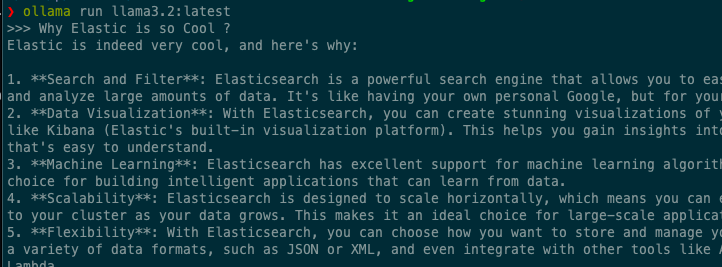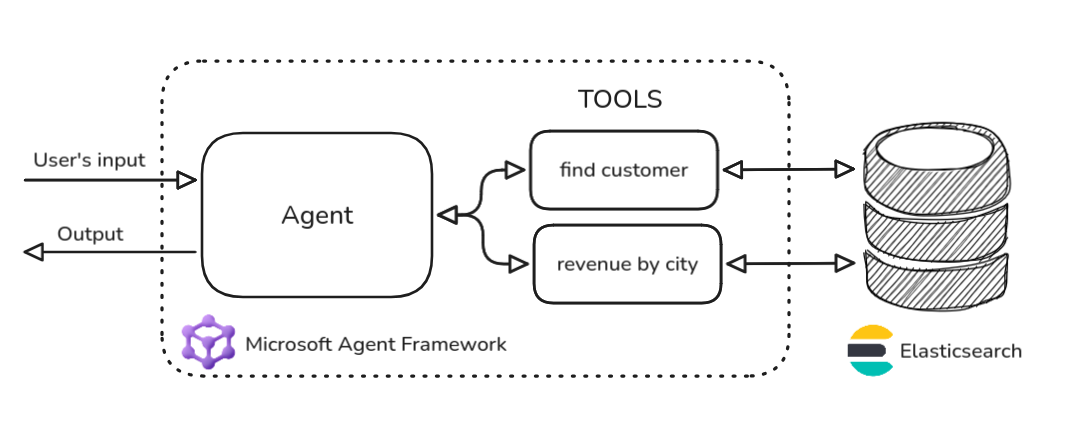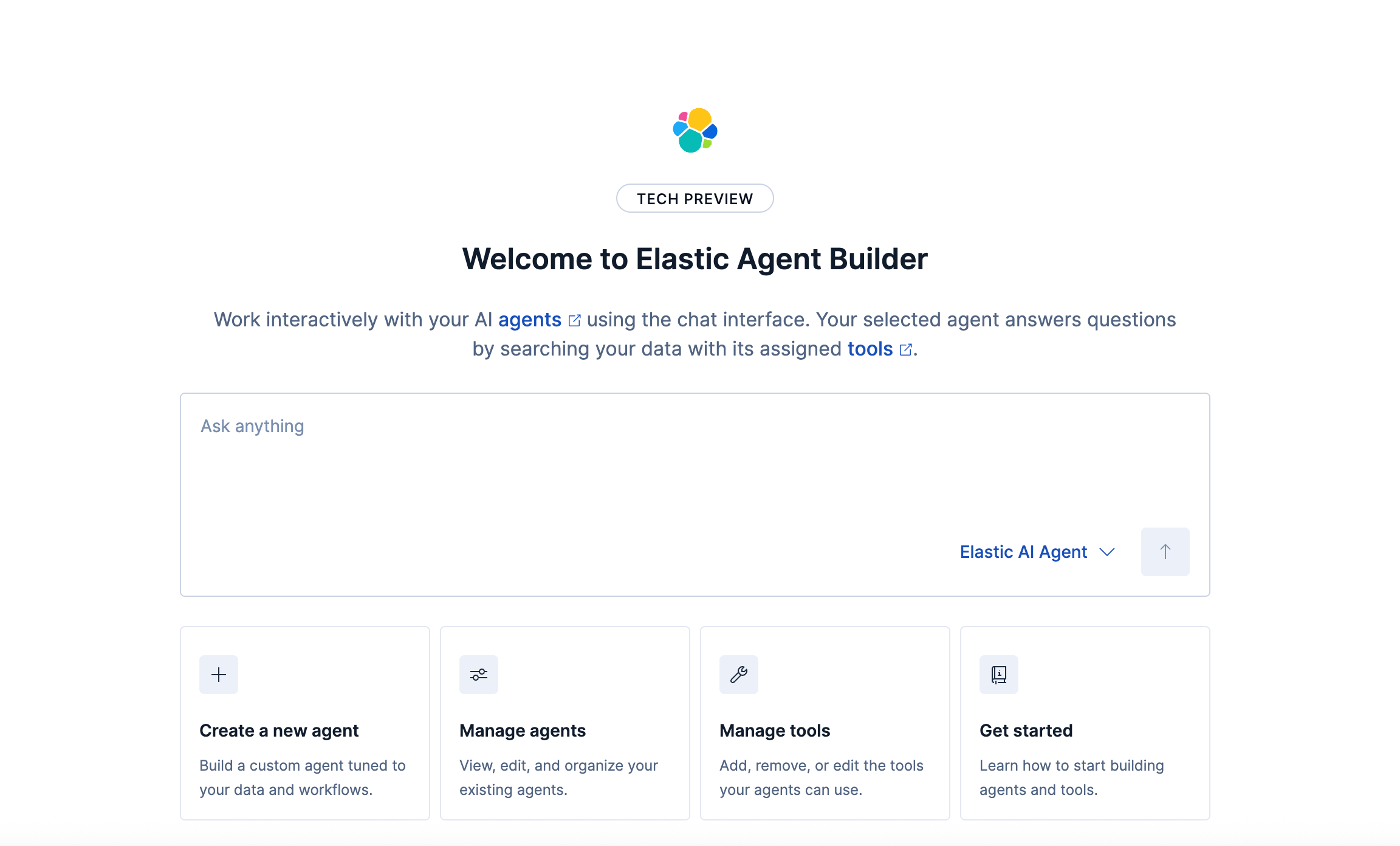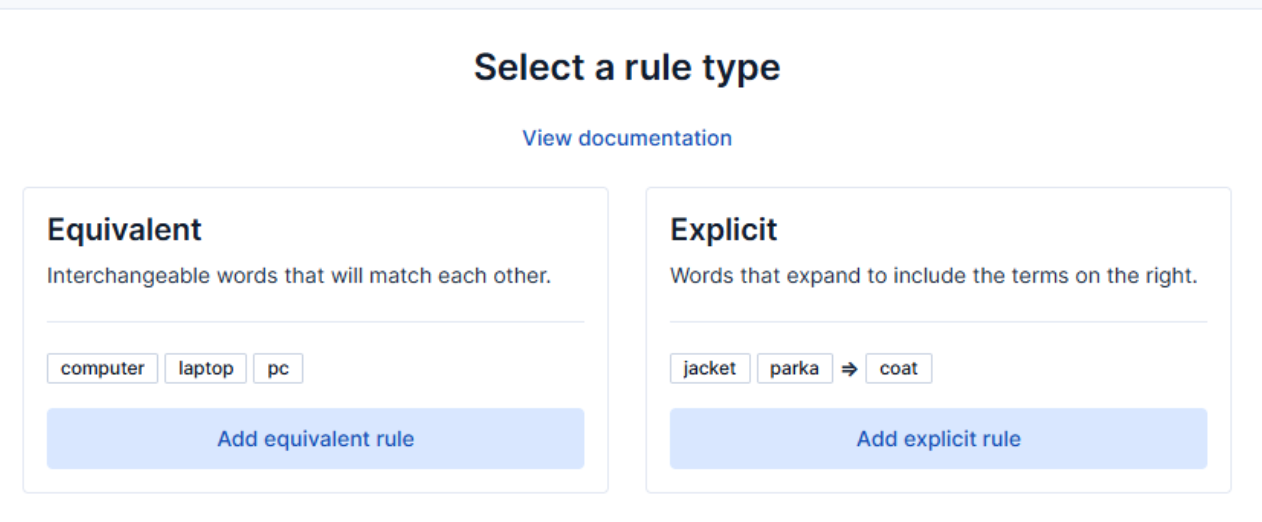There’s a lot to say about a wide variety of open models. Some of them are known as the Mixtral family, in all of their sizes, and a maybe less known kind are the openbiollm, a Llama 3 adaptation for the medical field. Testing all of them by implementing their APIs would take a lot of work. However, Ollama allows us to test them all using a friendly interface and a straightforward command line.
In this article, we’ll build a RAG application in Golang, using Ollama as the LLM server and Elasticsearch as the vector database.
Steps for building RAG application with Ollama & Go
Install Ollama
What is Ollama?
Ollama is a framework that allows you to download and access models locally with a CLI. With simple commands we can download, chat, and set up a server with the model we want to consume from our app.
Download the Ollama installer here:
The library with the available models is here:
Once you have installed Ollama, we can test that everything works by running one of the available models. Let’s install llama3.2 with 3B parameters. The library includes the necessary commands to download and run the model:

We’ll run the command for the 3B version:
ollama run llama3.2:latestThe first time, it will download the model and then open a chat in the terminal:

Now we can type /exit to exit and use the server set up in this location: http://localhost:11434. Let's test the endpoints to make sure everything is working as expected.
Ollama offers two answer modes: generate to provide a single answer and chat to have conversations with the model:
Generate
We use generate when we expect a single answer to a single question and nothing else.
curl http://localhost:11434/api/generate -d '{
"model": "llama3.2",
"stream": false,
"prompt":"Why is Elastic so cool?"
}'Chat
We use chat when we expect to continue the conversation after the first question, and we want the LLM to remember the previous interactions.
curl http://localhost:11434/api/chat -d '{
"model": "llama3.2",
"stream": false,
"messages": [
{ "role": "user", "content": "Why Elastic is so cool?" }
]
}'By default, the answer is generated as stream: true but we’ll use stream: false so that the answer is generated in just one message and it’s easier to read. stream: true is useful in UI applications as tokens are sent as they are generated, as opposed to blocking until the entire response is complete.
Let’s move on to the data.
Ingesting data
Let's index some medical documents in Elasticsearch as text and vectors. We'll use these to test the quality of the answers from a medical-oriented model like openbiollm compared to a general one.
Before we start, make sure that we have created the inference endpoint to use ELSER as our embeddings model:
PUT _inference/sparse_embedding/my-elser-model
{
"service": "elser",
"service_settings": {
"num_allocations": 1,
"num_threads": 1
}
}Now, let’s continue creating the index using the semantic_text field type that will allow us to control the chunking size, as well as vector configuration. This allows our index to support full text, semantic, and hybrid searches.
PUT rag-ollama
{
"mappings": {
"properties": {
"semantic_field": {
"type": "semantic_text",
"inference_id": "my-elser-model"
},
"content": {
"type": "text",
"copy_to": "semantic_field"
}
}
}
}Now, let’s index the documents:
POST _bulk
{"index":{"_index":"rag-ollama"}}
{"title":"JAK Inhibitors vs. Monoclonal Antibodies in Rheumatoid Arthritis Treatment","content":"This article compares the mechanisms of action, efficacy, and safety profiles of JAK inhibitors and monoclonal antibodies in rheumatoid arthritis treatment, including recent clinical trial data and real-world evidence. It discusses the intracellular signaling pathways targeted by JAK inhibitors, their rapid onset of action, and oral administration advantages. The article also covers the specific targets of various monoclonal antibodies, their long-term safety profiles, and the criteria for choosing between these two classes of drugs based on patient characteristics and disease severity."}
{"index":{"_index":"rag-ollama"}}
{"title":"Diagnostic Approach to Resistant Hypertension: Focus on Primary Aldosteronism","content":"This guide outlines the step-by-step diagnostic process for resistant hypertension, with a particular emphasis on screening and confirming primary aldosteronism. It details the use of aldosterone-renin ratio (ARR) testing as an initial screening tool, explaining proper patient preparation and interpretation of results. The guide also covers confirmatory tests such as the saline infusion test and captopril challenge test, their protocols, and diagnostic criteria. Additionally, it discusses the role of imaging studies in localizing aldosterone-producing adenomas and the importance of adrenal vein sampling in subtype classification of primary aldosteronism."}
{"index":{"_index":"rag-ollama"}}
{"title":"Gut Microbiota Diversity and Inflammatory Cytokine Production in IBD","content":"This study examines the relationship between gut microbiota diversity and the production of pro-inflammatory cytokines in inflammatory bowel diseases (IBD). It explores how reduced microbial diversity correlates with increased levels of cytokines such as TNF-α, IL-1β, and IL-6 in both Crohn's disease and ulcerative colitis. The research discusses specific bacterial species associated with anti-inflammatory effects and their mechanisms of action. Furthermore, it delves into potential therapeutic implications, including the use of prebiotics, probiotics, and fecal microbiota transplantation to modulate the gut microbiome and influence cytokine production. The study also touches on emerging microbiome-based interventions and their potential to complement existing IBD treatments."}
{"index":{"_index":"rag-ollama"}}
{"title":"Biological Therapy Selection in Rheumatoid Arthritis After csDMARD Failure","content":"This article provides a comprehensive framework for selecting appropriate biological therapy in rheumatoid arthritis patients who have not responded adequately to conventional synthetic Disease-Modifying Antirheumatic Drugs (csDMARDs). It discusses the various classes of biologics available, including TNF inhibitors, IL-6 inhibitors, B-cell depleting agents, and T-cell costimulation modulators. The article outlines key factors to consider in the decision-making process, such as disease activity scores, extra-articular manifestations, comorbidities, and patient preferences. It also addresses the importance of biomarkers and predictors of treatment response in guiding therapy selection. The piece concludes with a discussion on cycling versus switching mechanisms of action when faced with inadequate response to an initial biologic agent."}
{"index":{"_index":"rag-ollama"}}
{"title":"Hypertension Management in Chronic Kidney Disease: Special Considerations","content":"This review discusses the unique challenges in managing hypertension in patients with chronic kidney disease (CKD). It outlines the current recommendations for blood pressure targets in CKD patients, explaining how these differ based on the presence and degree of albuminuria. The article explores the preferred classes of antihypertensive medications in CKD, with a focus on renin-angiotensin system blockers and their renoprotective effects. It addresses the complexities of managing volume status in CKD and the role of diuretics. The review also covers the impact of proteinuria on treatment decisions and the need for more aggressive blood pressure control in heavily proteinuric patients. Finally, it discusses considerations for patients on dialysis and the phenomenon of reverse epidemiology in end-stage renal disease."}Done! Now that we have the model and data ready, we can put everything together with our Go app.
RAG App in Go
For our Go application, we could make calls to the Ollama server directly but I’ve decided to use parakeet instead. Parakeet is a library to create GenAI applications based on Go text. It provides Go interfaces to abstract the HTTP communication, besides giving helpers for embeddings, chunking, and memory, among others, so it makes it very easy to create an application.
We’ll begin by creating our work folder and setting up dependencies:
mkdir ollama-rag
cd ollama-rag
go mod init ollama-rag
go get github.com/parakeet-nest/parakeet
go get github.com/elastic/go-elasticsearch/v8@latestNow, create a main.go file with the minimum you need to test that everything is configured correctly:
main.go
package main
import (
"github.com/parakeet-nest/parakeet/completion"
"github.com/parakeet-nest/parakeet/enums/option"
"github.com/parakeet-nest/parakeet/llm"
"fmt"
)
func main() {
ollamaUrl := "http://localhost:11434"
model := "llama3.2:latest"
options := llm.SetOptions(map[string]interface{}{
option.Temperature: 0.5,
})
question := llm.GenQuery{
Model: model,
Prompt: "Why Elastic is so cool?, answer in one sentence",
Options: options,
}
// We use generate because we are going to run this script to ask a single question
answer, err := completion.Generate(ollamaUrl, question)
if err != nil {
log.Fatal("😡:", err)
}
fmt.Println(answer.Response)
}Run it:
go run main.goIn the terminal, you should see an answer similar to this:
Elastic, a company known for its innovative and user-friendly software solutions, has disrupted the traditional IT industry by empowering businesses to create, deploy, and manage applications quickly and reliably.
This answer is based on the LLM's training data, which is not something that we can provide or control and present some disadvantages:
- Information may be wrong
- Information may be outdated
- There is no way to get citations of the source
Now, let’s create a file called elasticsearch/elasticsearch.go to connect with Elasticsearch using the Go’s official client and be able to use the information in our documents to generate grounded answers based on our data.
package elasticsearch
import (
"context"
"encoding/json"
"fmt"
"strings"
"github.com/elastic/go-elasticsearch/v8"
"github.com/elastic/go-elasticsearch/v8/typedapi/types"
)
// Initializing elasticsearch client
func EsClient() (*elasticsearch.TypedClient, error) {
var cloudID = "" // your Elastic Cloud ID Here
var apiKey = "" // your Elastic ApiKey Here
es, err := elasticsearch.NewTypedClient(elasticsearch.Config{
CloudID: cloudID,
APIKey: apiKey,
})
if err != nil {
return nil, fmt.Errorf("unable to connect: %w", err)
}
return es, nil
}
// Searching for documents and building the context
func SemanticRetriever(client *elasticsearch.TypedClient, query string, size int) (string, error) {
// Perform the semantic search
res, err := client.Search().
Index("rag-ollama").
Query(&types.Query{
Semantic: &types.SemanticQuery{
Field: "semantic_field",
Query: query,
},
}).
Size(size).
Do(context.Background())
if err != nil {
return "", fmt.Errorf("semantic search failed: %w", err)
}
// Prepare to format the results
var output strings.Builder
output.WriteString("Documents found\n\n")
// Iterate through the search hits
for i, hit := range res.Hits.Hits {
// Define a struct to unmarshal each document
var doc struct {
Title string `json:"title"`
Content string `json:"content"`
}
// Unmarshal the document source into our struct
if err := json.Unmarshal(hit.Source_, &doc); err != nil {
return "", fmt.Errorf("failed to unmarshal document %d: %w", i, err)
}
// Append the formatted document to our output
output.WriteString(fmt.Sprintf("Title\n%s\n\nContent\n%s\n", doc.Title, doc.Content))
// Add a separator between documents, except for the last one
if i < len(res.Hits.Hits)-1 {
output.WriteString("\n-----\n\n")
}
}
// Return the formatted output as a string
return output.String(), nil
}The EsClient function initializes the Elasticsearch client using the Cloud Credentials provided, and SemanticRetriever performs a semantic query to build the context the LLM needs to answer a question.
To find your Cloud ID and API Key, go to this link.
Let’s go back to our main.go file and update with the above features to call Elasticsearch and run a semantic query: This builds the LLM context:
main.go
package main
import (
"fmt"
"log"
"ollama-rag/elasticsearch"
"github.com/parakeet-nest/parakeet/completion"
"github.com/parakeet-nest/parakeet/enums/option"
"github.com/parakeet-nest/parakeet/llm"
)
func main() {
ollamaUrl := "http://localhost:11434"
chatModel := "llama3.2:latest"
question := `Summarize document: JAK Inhibitors vs. Monoclonal Antibodies in Rheumatoid Arthritis Treatment`
size := 3
esClient, err := elasticsearch.EsClient()
if err != nil {
log.Fatalln("😡:", err)
}
// Retrieve documents from semantic query to build context
documentsContent, nil := elasticsearch.SemanticRetriever(esClient, question, size)
systemContent := `You are a helpful medical assistant. Only answer the questions based on found documents.
Add references to the base document titles and be succint in your answers.`
options := llm.SetOptions(map[string]interface{}{
option.Temperature: 0.0,
})
queryChat := llm.Query{
Model: chatModel,
Messages: []llm.Message{
{Role: "system", Content: systemContent},
{Role: "system", Content: documentsContent},
{Role: "user", Content: question},
},
Options: options,
}
fmt.Println()
fmt.Println("🤖 answer:")
// Answer the question
_, err = completion.ChatStream(ollamaUrl, queryChat,
func(answer llm.Answer) error {
fmt.Print(answer.Message.Content)
return nil
})
if err != nil {
log.Fatal("😡:", err)
}
fmt.Println()
}As you can see, we send the user’s question together with all of the documents related to it. This is how we get an answer based on documents in Elasticsearch.
We can test by running the code:
go run .You should see something like:
According to the article "JAK Inhibitors vs. Monoclonal Antibodies in Rheumatoid Arthritis Treatment", JAK inhibitors and monoclonal antibodies are two classes of drugs used to treat rheumatoid arthritis (RA). The main difference between them lies in their mechanisms of action:
JAK inhibitors target intracellular signaling pathways, specifically the Janus kinase (JAK) pathway, which is involved in inflammation and immune response. They have a rapid onset of action and are administered orally.
Monoclonal antibodies target specific proteins involved in the inflammatory process, such as tumor necrosis factor-alpha (TNF-α), interleukin-6 (IL-6), and interleukin-17 (IL-17).
The article highlights that JAK inhibitors have a more favorable safety profile compared to monoclonal antibodies, with fewer gastrointestinal side effects. However, the choice between these two classes of drugs depends on patient characteristics and disease severity.
"References:"
"JAK Inhibitors vs. Monoclonal Antibodies in Rheumatoid Arthritis Treatment" (document title)
Parakeet will handle the Ollama interaction for us, including the token stream! From now on, we can test different models quite easily without making changes to the code.
Besides the models in the main library, we also have access to the ones uploaded by community members.
To use one, we just have to make sure to download into Ollama first. For example, let’s test openbiollm:
ollama run taozhiyuai/openbiollm-llama-3:8b_q8_0
Once installed, we can use it with our Go code:
chatModel := "taozhiyuai/openbiollm-llama-3:8b_q8_0"Let’s run it again with the same question. Do you notice any differences?
In rheumatoid arthritis treatment, JAK inhibitors and monoclonal antibodies are commonly used. This article discusses the benefits and drawbacks of both therapies. JAK inhibitors work by targeting intracellular signaling pathways involved in the immune response. They have a rapid onset of action and can be administered orally, making them convenient for patients. Recent clinical trial data has shown that JAK inhibitors are effective at reducing inflammation and slowing joint damage progression in rheumatoid arthritis. However, there is still ongoing research to fully understand their long-term safety profile. Monoclonal antibodies, on the other hand, specifically target molecules involved in the immune system. These drugs have been found to be highly effective in managing symptoms of rheumatoid arthritis and improving joint function. They can provide prolonged symptom control and are often used as first-line treatment options. However, due to their complexity and unique administration requirements, monoclonal antibodies may not be suitable for all patients. In conclusion, both J AK inhibitors and monoclonal antibodies have their own advantages and disadvantages in treating rheumatoid arthritis. The choice of therapy depends on individual patient characteristics and disease severity. Ongoing research will contribute to a deeper understanding of the efficacy and safety profiles of these treatments, ultimately leading to improved care for patients with rheumatoid arthritis.
It seems that the openbiollm model provided more details with the technical lingo, but it didn’t follow instructions about referencing the documents provided in the context and giving brief answers. In comparison, Llama3.2 followed instructions better.
You can find the full working example here
Conclusion
Ollama provides a very straightforward and simple way to download and test different open models, from the better-known to those fine-tuned by community members. Pairing it with Parakeet and the official Elasticsearch Go client, makes it very easy to create a RAG application. In addition, by using the semantic_text field type, you can create a semantic-query-ready index that uses ELSER–the Elastic Sparse embeddings model–without any additional configurations, thus simplifying the chunking, indexing, and vector querying process, too.
Ready to try this out on your own? Start a free trial.
Want to get Elastic certified? Find out when the next Elasticsearch Engineer training is running!
Related content

October 27, 2025
Building agentic applications with Elasticsearch and Microsoft’s Agent Framework
Learn how to use Microsoft Agent Framework with Elasticsearch to build an agentic application that extracts ecommerce data from Elasticsearch client libraries using ES|QL.

October 21, 2025
Introducing Elastic’s Agent Builder
Introducing Elastic Agent Builder, a framework to easily build reliable, context-driven AI agents in Elasticsearch with your data.

October 20, 2025
Elastic MCP server: Expose Agent Builder tools to any AI agent
Discover how to use the built-in Elastic MCP server in Agent Builder to securely extend any AI agent with access to your private data and custom tools.

How to use the Synonyms UI to upload and manage Elasticsearch synonyms
Learn how to use the Synonyms UI in Kibana to create synonym sets and assign them to indices.

October 13, 2025
AI Agent evaluation: How Elastic tests agentic frameworks
Learn how we evaluate and test changes to an agentic system before releasing them to Elastic users to ensure accurate and verifiable results.